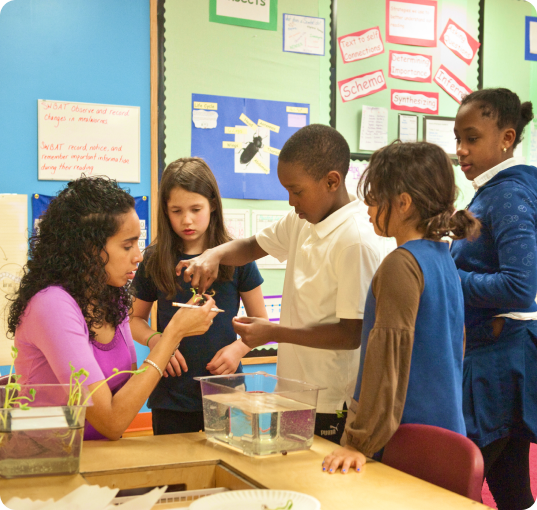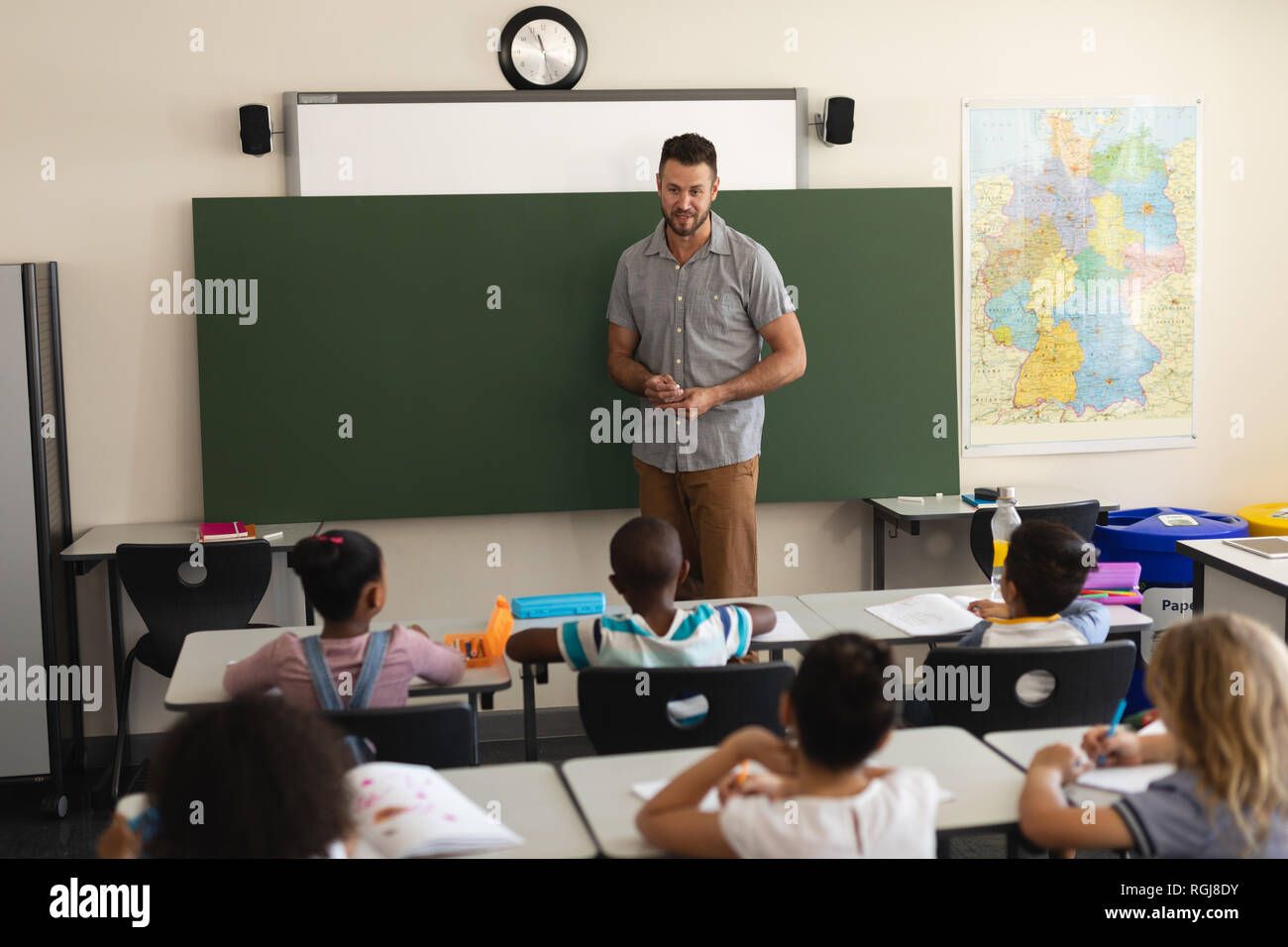A Comprehensive Overview to the Numerous Learning Techniques in Primary Scientific Research Instruction
The expedition of diverse discovering approaches in primary scientific research instruction presents a chance for teachers to boost pupil interaction and comprehension considerably. By taking a look at hands-on learning methods, inquiry-based strategies, and collaborative techniques, we can determine effective practices that deal with different discovering styles. In addition, the assimilation of modern technology and differentiated direction plays an important function in cultivating an inclusive setting. The question remains: how can these techniques be properly executed in the class to maximize their influence? The response hinges on a more detailed evaluation of each approach and its effects for training scientific research.

Hands-On Discovering Methods
Hands-on knowing techniques play a critical duty in primary science guideline, engaging trainees in active exploration and trial and error. These approaches enable learners to communicate straight with materials and phenomena, promoting a deeper understanding of scientific principles. By using manipulatives, versions, and real-life experiments, instructors develop an environment where trainees can observe, hypothesize, and examine their concepts.
Such methods not only improve understanding but likewise grow essential reasoning and analytic abilities. When pupils take part in activities like building easy makers, planting seeds, or conducting chain reactions, they are motivated to ask concerns and look for responses with their own observations. This experiential strategy helps to debunk complicated scientific concepts, making them more relatable and accessible.
Additionally, hands-on learning advertises partnership among peers, as trainees commonly operate in teams to conduct experiments or share searchings for. This synergy not only enhances their discovering experience but also creates necessary social skills. Inevitably, integrating hands-on techniques in key science guideline fosters a lifelong love of discovering and curiosity regarding the all-natural globe, laying a strong foundation for future scholastic searches in science and beyond.
Inquiry-Based Learning
Inquiry-based knowing is an educational strategy that urges students to ask questions, explore phenomena, and build their very own understanding of clinical concepts. This method shifts the focus from typical teacher-led guideline to a more student-centered experience, where learners take the effort in their instructional journey. By promoting inquisitiveness, inquiry-based knowing promotes deeper engagement with the product, allowing trainees to discover topics in a purposeful context.
In technique, this strategy typically entails hands-on experiments, monitorings, and crucial thinking tasks that line up carefully with the scientific method. Trainees are motivated to create theories, style investigations, and analyze information, which grows important skills such as logical and analytical thinking. The role of the educator in this structure is to facilitate expedition, assisting students via the questions procedure while encouraging independent idea and cooperation.
Furthermore, inquiry-based discovering supports a feeling of ownership over the learning procedure, encouraging trainees to go after expertise actively. This technique not only boosts understanding of clinical concepts yet likewise promotes a long-lasting love for knowing, outfitting students with the skills essential to navigate a progressively complex globe.
Collaborative Understanding Approaches
Joint learning approaches equip students to participate in meaningful communications with peers, cultivating a common responsibility for their academic results. In main scientific research direction, these techniques urge students to work together to explore scientific principles, address problems, and carry out experiments (primary science tuition Singapore). By taking part in group tasks, trainees can take advantage of diverse viewpoints, permitting richer understanding and retention of clinical knowledge
One secret element of collaborative knowing is the focus on interaction abilities. Students need to articulate their thoughts, pay attention actively to others, and bargain concepts, every one of which are crucial proficiencies in both real-world and scholastic contexts. This social interaction not just enhances their understanding of clinical concepts but likewise promotes team effort and problem resolution skills.
Furthermore, collective knowing commonly brings about boosted motivation and interaction. They are much more most likely to take possession of their discovering journey when trainees see the value of their contributions within a group. Educators can facilitate this procedure deliberately organized group tasks that align with educational program goals while giving support on effective collaboration methods. In general, integrating joint knowing techniques in main science instruction grows a dynamic understanding setting that prepares pupils for future scholastic and social difficulties.
Modern Technology Assimilation in Science
The combination of innovation in primary science guideline enhances discovering experiences by giving cutting-edge devices and sources that support various teaching methods, including collective understanding - primary science tuition Singapore. Using electronic platforms, simulations, and interactive applications enables students to engage deeply with clinical concepts, promoting a much more hands-on technique to understanding
Online labs, as an example, make it possible for students to perform experiments securely and effectively, promoting inquiry-based discovering. These tools can imitate real-world clinical situations, allowing pupils to envision intricate processes that would be difficult to replicate in a typical classroom setting. Moreover, modern technology promotes communication and partnership amongst pupils, as they can share searchings for and collaborate on jobs via on the internet platforms.
In addition, multimedia discussions and educational videos can enhance lessons by satisfying varied knowing styles, making abstract concepts much more obtainable. Data analysis devices also empower students to accumulate and analyze clinical information, enhancing crucial believing abilities. Generally, the calculated incorporation of modern technology in main science guideline not only improves involvement why not find out more but likewise prepares students for a technologically innovative culture, equipping them with essential abilities for future clinical endeavors.
Distinguished Guideline Strategies
Distinguished instruction approaches are vital for dealing with the diverse needs of learners in main science education and learning. These techniques make it possible for educators to customize their training methods to suit varying right here capacities, interests, and finding out styles within the class. By utilizing distinguished guideline, educators can produce a comprehensive environment that promotes involvement and enhances understanding of clinical ideas.
One efficient technique is to use adaptable grouping, which enables pupils to work together with peers at comparable skill levels or with differing perspectives. This approach urges peer understanding and promotes essential thinking. Furthermore, offering choices in assignments can encourage students, permitting them to choose projects that reverberate with their passions while still satisfying curricular objectives.
Additionally, including tiered projects is one more important strategy. By making jobs with differing levels of intricacy, instructors can make sure that all students are properly tested, despite their effectiveness. Making use of developmental assessments to evaluate comprehending further makes it possible for instructors to adjust their training approaches dynamically, guaranteeing that each student gets the support they require.
Ultimately, carrying out distinguished guideline methods in primary scientific research education and learning not just boosts pupil learning outcomes yet also grows a passion for scientific research, preparing trainees for future academic quests.

Final Thought
In summary, effective main scientific research guideline requires a diverse technique that encompasses hands-on learning, inquiry-based techniques, and collaborative methods. The assimilation of innovation and set apart guideline even more caters to diverse learning designs, fostering an atmosphere helpful to expedition and vital thinking.
The expedition of varied understanding methods in key science click here for info guideline presents a chance for teachers to boost pupil involvement and comprehension substantially.Hands-on understanding techniques play a critical function in key scientific research instruction, engaging trainees in active expedition and trial and error.Inquiry-based knowing is an instructional method that encourages trainees to ask concerns, investigate phenomena, and construct their own understanding of clinical concepts.Joint knowing techniques encourage trainees to involve in purposeful interactions with peers, cultivating a common responsibility for their educational results. On the whole, including collective discovering approaches in primary science direction cultivates a dynamic knowing setting that prepares pupils for future academic and social obstacles.